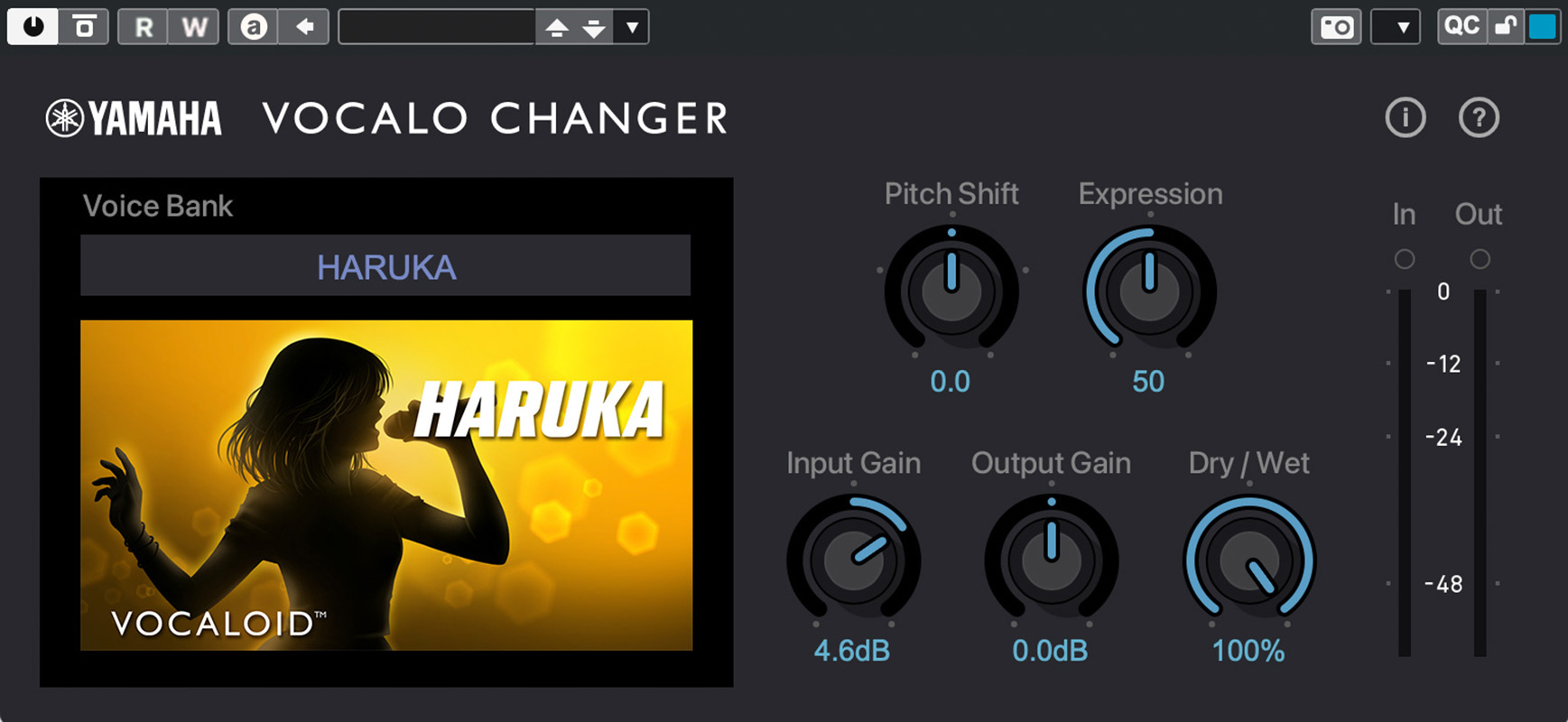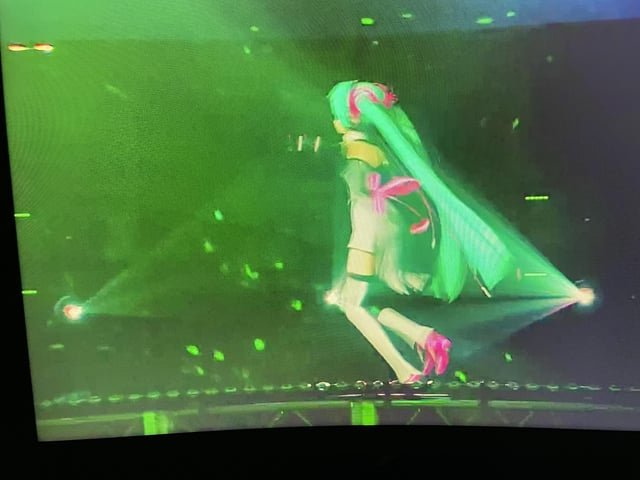Vocaloid technology is changing the music world. It's a big part of AI music now.
Vocaloid, a singing voice synthesizer, is making waves in the music industry. It allows computers to sing, creating new possibilities for artists. With AI, music production becomes easier and more creative. This technology blends human-like voices with machine learning, opening doors to unique musical experiences.
Fans and musicians alike are excited about what comes next. Vocaloid isn't just a tool; it's shaping the future of how we create and enjoy music. As AI music grows, Vocaloid stands out as a key player, making the future of music sound more innovative and exciting.

Credit: hudsonweekly.com
Introduction To Vocaloid Technology
Vocaloid technology is reshaping the future of AI music. This technology allows computers to sing using synthetic voices. It opens up new possibilities for music creation. Artists use Vocaloid to create unique sounds and experiment with different musical styles. Let's delve deeper into this fascinating technology.
What Is Vocaloid?
Vocaloid is a voice synthesizer software. It enables users to produce singing by typing in lyrics and melody. The software then generates a singing voice using pre-recorded samples. These samples come from real singers. Vocaloid can produce songs in various languages. It is used by hobbyists and professional musicians alike.
| Feature | Description |
|---|---|
| Voice Library | Collection of pre-recorded voice samples |
| User Interface | Allows input of lyrics and melodies |
| Sound Quality | High-quality, realistic singing voices |
History And Development
The development of Vocaloid began in the early 2000s. Yamaha Corporation led the project. The first version, Vocaloid 1, was released in 2004. It featured voices like Leon and Lola. These were the first English singing voices.
Over the years, Vocaloid technology has evolved. New versions introduced more realistic and expressive voices. Vocaloid 2, released in 2007, included popular characters like Hatsune Miku. This character became a cultural icon. Vocaloid 3 and 4 further improved voice quality and added more languages.
Today, Vocaloid 5 offers advanced features. It includes a wide range of voices and styles. It allows for more detailed control over the singing performance. This makes it a powerful tool for music creators.
- 2004: Vocaloid 1 released
- 2007: Vocaloid 2 with Hatsune Miku
- 2011: Vocaloid 3 with more languages
- 2014: Vocaloid 4 with improved realism
- 2018: Vocaloid 5 with advanced features
Vocaloid technology continues to evolve. It pushes the boundaries of what is possible in music creation. Its impact on the music industry is undeniable.
Key Features Of Vocaloid Software
Vocaloid technology is changing the way we create music. It offers exciting features that make it easier for artists and producers. Let's explore some of these key features and understand their impact on AI music.
Voice Synthesis
Voice synthesis is the core feature of Vocaloid software. It allows users to create singing voices by typing in lyrics and melodies. The software then generates a human-like singing voice. This makes it possible for users to produce songs without a human singer.
The voice synthesis feature uses advanced algorithms. These algorithms analyze and process the input data. As a result, the output sounds natural and realistic. This feature is especially helpful for composers and producers. They can now create demo tracks or full songs with ease.
Customization And Flexibility
Customization and flexibility are other important features of Vocaloid software. Users can modify the singing voice to fit their needs. This includes adjusting the pitch, tone, and speed of the voice.
The software offers a wide range of voice banks. Each voice bank represents a different singing style or character. Users can mix and match these voice banks. This provides endless possibilities for creating unique sounds.
Another key aspect of customization is the ability to tweak the phonetics. This ensures that the pronunciation is accurate. It also helps in achieving the desired emotional expression in the song.
Impact On The Music Industry
Vocaloid technology is transforming how music is created and consumed. This innovation is having a profound impact on the music industry. From production to accessibility, Vocaloid is changing the landscape.
Revolutionizing Music Production
Vocaloid technology is simplifying music production. Artists no longer need to hire singers. They can use Vocaloid software to generate vocals. This reduces costs and speeds up production time.
Producers can experiment with different voices and styles. This flexibility fosters creativity and innovation in music. Vocaloid provides a virtual singer that can sing any lyrics. This opens up new possibilities for music creation.
The quality of Vocaloid voices is improving. They sound more human-like and expressive. This makes them suitable for a wider range of music genres.
Democratizing Music Creation
Vocaloid technology is making music creation accessible to everyone. You don't need a professional studio to create music. Anyone with a computer can use Vocaloid software.
This democratization empowers independent artists. They can produce and release music without a record label. Aspiring musicians can create music from home. This levels the playing field in the music industry.
Vocaloid also allows for collaboration across distances. Artists can work together without being in the same location. This fosters global collaboration and cultural exchange in music.
| Feature | Benefit |
|---|---|
| Cost Reduction | Lower production costs |
| Flexibility | Experiment with styles |
| Accessibility | Anyone can create music |
Ai And Vocaloid Integration
The integration of AI and Vocaloid technology is transforming the music industry. Vocaloid is a singing voice synthesizer software. It uses AI to create realistic vocal performances. This technology is shaping the future of music creation. Let's explore how AI and Vocaloid work together.
Machine Learning Techniques
AI uses machine learning techniques to enhance Vocaloid performance. These techniques allow the software to learn from vast amounts of data. The AI analyzes vocal patterns, inflections, and styles. It then uses this information to produce more natural-sounding vocals.
Here are some key machine learning techniques used:
- Neural Networks – These mimic the human brain's processing.
- Deep Learning – This involves multiple layers of neural networks.
- Recurrent Neural Networks (RNNs) – These are used for sequential data like music.
Enhanced Vocal Realism
The goal of Vocaloid technology is to create enhanced vocal realism. This means making the synthesized voice sound as human as possible. AI plays a crucial role in achieving this.
Here are some advancements in vocal realism:
- Emotional Expression – AI can add emotions to the vocals.
- Pronunciation Accuracy – Better pronunciation of different languages.
- Dynamic Range – Ability to sing softly or loudly with ease.
AI and Vocaloid integration is pushing the boundaries of what's possible in music. With machine learning and enhanced vocal realism, the future of AI music is bright.
Innovative Applications
Vocaloid technology is transforming how we create and enjoy music. This innovative technology has many applications. Let's explore some of these exciting uses.
Virtual Pop Stars
Virtual pop stars are computer-generated singers. They perform songs just like real singers. Hatsune Miku is a famous example. She has millions of fans worldwide. These stars can sing any song. They do not need rest or breaks. They always sound perfect. This makes them very popular with music producers.
Interactive Live Performances
Interactive live performances are another exciting application. Virtual pop stars can perform live on stage. They interact with fans during the show. This creates a unique experience. Fans feel closer to their favorite virtual stars. These performances use advanced technology. They combine music, lights, and animations. The result is an unforgettable show.

Credit: medium.com
Challenges And Limitations
Vocaloid technology is pushing the boundaries of AI music creation. But it faces several challenges and limitations that need addressing. These obstacles range from technical issues to ethical dilemmas.
Technical Hurdles
One major technical hurdle is achieving natural-sounding vocals. Despite advancements, synthetic voices often lack the emotional depth of human singers. Another challenge is the complexity of fine-tuning vocal parameters. It requires significant time and expertise to get desired results. Compatibility with various music software is another issue. Not all programs work seamlessly with Vocaloid technology. This can limit creative flexibility for music producers.
Ethical Considerations
Ethical considerations also present significant challenges. One concern is the potential for plagiarism. AI can mimic existing artists, leading to unintentional copying. Another ethical dilemma is the displacement of human singers. As AI vocals improve, opportunities for human artists may diminish. Privacy issues are also a concern. Using vocal samples without permission raises serious ethical questions.
Future Prospects
The future of Vocaloid technology in AI music looks bright. The potential for growth in this field is immense. As AI evolves, so does the music it creates. This transformation opens new doors for creativity and innovation.
Advancements In Ai
AI in music has come a long way. Vocaloid technology now produces lifelike voices. These voices sound more natural than ever. AI composers can create complex melodies. This progress allows for more diverse music. Music creators can use AI tools to explore new sounds. These advancements push the boundaries of traditional music.
Potential For New Genres
AI music opens the door to new genres. Artists can blend different styles. They can create music that was not possible before. AI can mix various cultural influences. This results in unique and fresh sounds. These new genres can attract a broader audience. AI music can also cater to niche markets. This diversity enriches the global music scene.

Credit: medium.com
Frequently Asked Questions
What Is Vocaloid Technology?
Vocaloid technology is a singing voice synthesizer software. It uses pre-recorded vocals to create realistic singing. It's widely used in music production.
How Does Vocaloid Impact Ai Music?
Vocaloid impacts AI music by providing realistic vocal elements. It enables creators to produce high-quality music without human singers.
Can Vocaloid Replace Human Singers?
Vocaloid can create impressive vocals, but it can't fully replace human singers. Human emotion and spontaneity are still unmatched.
What Are The Benefits Of Using Vocaloid?
Vocaloid offers flexibility and creativity. It allows for unique vocal compositions and reduces production costs.
Conclusion
Vocaloid technology is transforming the future of AI music. It blends creativity with innovation. This technology enables unique and diverse musical compositions. Artists can explore new sounds and styles effortlessly. It offers endless possibilities for music creators. The future of music looks more exciting than ever.
As Vocaloid technology evolves, expect more groundbreaking music. Stay tuned for more incredible AI-generated tunes. The fusion of AI and music is just beginning. Get ready for a melodic adventure.










